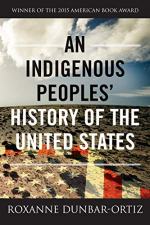
|
| Name: _________________________ | Period: ___________________ |
This test consists of 15 multiple choice questions and 5 short answer questions.
Multiple Choice Questions
1. Dunbar-Ortiz describes settler colonialism as a certain type of political policy. What adjective does she use to describe this policy?
(a) Abnormal.
(b) Genocidal.
(c) Imperial.
(d) Consequential.
2. What Christian denomination did most Calvinists belong to?
(a) Methodism.
(b) Lutherenism.
(c) Presbyterianism.
(d) Catholicism.
3. What is the term for a narrative describing how a nation came to exist?
(a) A source legend.
(b) A genesis legend.
(c) A creation myth.
(d) An origin myth.
4. What percentage of the population of the Thirteen Colonies was made up of Ulster-Scots?
(a) 20%.
(b) 25%.
(c) 15%.
(d) 10%.
5. According to Dunbar-Ortiz, how many U.S. presidents were of Ulster-Scots lineage?
(a) 15.
(b) 17.
(c) 21.
(d) 12.
6. Prior to the Colonial era, how many Native people inhabited the region that is now part of the U.S.?
(a) 10 million.
(b) 15 million.
(c) 5 million.
(d) 20 million.
7. What term, designed to "diffuse the locus of guilt" (4), does Bernard Sheehan use to describe Native-Euro-American relations?
(a) Regional conflict.
(b) Relational conflict.
(c) Cultural conflict.
(d) Interracial conflict.
8. When was Massachusetts Bay Colony founded?
(a) 1630.
(b) 1628.
(c) 1626.
(d) 1632.
9. The American bison was indigenous to what region?
(a) The southwestern deserts.
(b) The northern and southern plains.
(c) The eastern seaboard.
(d) The southeastern swampland.
10. John Smith convinced Powhatan leaders to feed and clothe English settlers. How did he achieve this?
(a) He traded gold and silver in exchange for Native help.
(b) He promised that the English government would repay Natives.
(c) He claimed that the Native people had a spiritual duty of offer help.
(d) He threatened to kill all Native women and children.
11. What year were Israel and South Africa founded?
(a) 1950.
(b) 1954.
(c) 1942.
(d) 1948.
12. How did Europeans view the newly "discovered" Americas?
(a) As a confining spare or prison.
(b) As a virgin land or wilderness.
(c) As a complex civilization.
(d) As a barren wasteland.
13. During the onset of colonialism, the native population in the Americas rapidly shrank. By what percentage were native populations reduced?
(a) 90%.
(b) 70%.
(c) 60%.
(d) 80%.
14. What was the outcome of the Treaty of Paris?
(a) Britain ceded Canada and territory west of the Mississippi to the French.
(b) Britain reclaimed all territories within the Americas from France and Spain.
(c) France claimed Canada and all western territories within the Americans.
(d) France ceded Canada and the territory east of the Mississippi to the British.
15. How does corn differ from most grains?
(a) It germinates beneath the soil.
(b) It cannot be eaten raw.
(c) It cannot grow in the wild.
(d) It's harvested by flooding the land.
Short Answer Questions
1. What term is used to describe the historical and cultural region encompassing North America?
2. What Native nation was predominant in the territory of Georgia during the early 1700s?
3. Which of the following tribes was a member of the Six Nations of the Iroquois confederacy?
4. What was the primary crop in Native American agriculture?
5. According to the Dunbar-Ortiz, which population was the first to be forcibly organized and exploited by European aristocracy?
|
This section contains 467 words (approx. 2 pages at 300 words per page) |

|




